Do you know what the Canadian tire installation cost is or what are the Canadian Tires and wheels packages? Well, you are at the perfect place to find the answer to such a question.
Canadian Tire is more than just a tire company and since its 1922 founding, they’ve morphed into a hardware, sports, and home decor retailer as well. At their core, they are still a tire store, but what do they charge for their tire services, especially installation?
At Canadian Tire, Installation costs per tire can range from $13 and $45 per tire. The disparity is due to different tire sizes, with much larger tires commanding a premium price. Winter tires can make a difference too, especially the larger ones.
Another reason for the large disparity in pricing is that it goes well beyond just winter tires. The amount you pay is based on the tire and Canadian Tire sells All-Season Tires, Winter Tires, Performance Tires, and All-Terrain Tires.
Table of Contents
The typical cost for mounting a brand new set of tires, installing, and balancing them is $20 to $30 per wheel. Once again, it’s entirely dependent on what kind of tires they are and what size they are.
Canadian Tire recommends that you get all of your tires balanced at least once per year and the cost for just the balance is anywhere between $8 and $12 per tire. Tires that aren’t properly balanced cost drivers in fuel consumption and can lead to uneven tread wear over time.
Uneven tread wear, if it gets bad enough, will eventually lead to a blowout but there will be signs and symptoms well before you reach that point, such as vibration at higher speeds.
Compared to their competition, Canadian Tires sits in the higher range for service costs, with Kal Tire, 1010Tires, and SimplyTire overtaking them for the most costly balance and mounting services across the industry.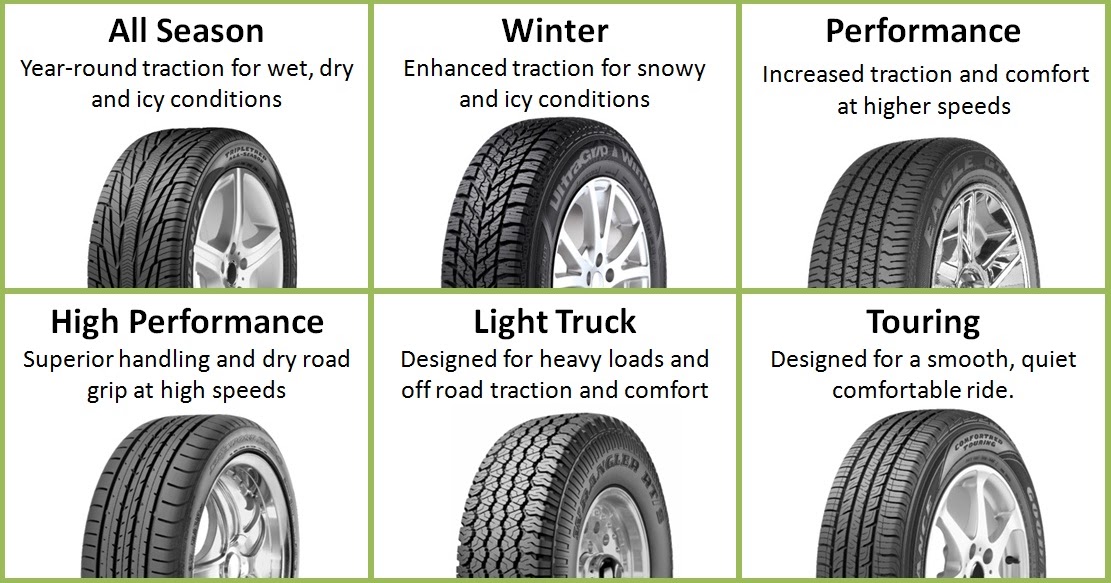
Read also >> Is Discount Tire’s Warranty Transferable? (Coverage + More)
Tires that are already mounted on a wheel are going to cost less when it comes to balancing and rotation.
The average cost for changing tires that are already mounted, including a balance, is $75, which comes to $18.75 per tire.
CAA Mobile, SimplyTire, and BMW Dealerships have higher costs than Canadian Tire for this service, but it’s not by much.
There are several things that go into the cost of tire services, so you will never get a ‘one price fits all’ answer.
Setting an appointment to have your tires serviced or so you can purchase new ones will generally come with a stiffer price tag. It’s like a service fee for getting to avoid the lines and the wait times.
It’s like a service fee for getting to avoid the lines and the wait times.
However, if you have plenty of patience, going and getting in line will often save you some change. It’s not a substantial difference but when it comes to tires, costs can add up rather quickly, especially if you are getting all four of them serviced or purchasing a set of four new tires.
Like everything we purchase, seasons have a direct effect on the cost. If you want winter tires and show up at Canadian Tire in February, you’re going to pay a premium on four brand-new winter tires. If you go during the spring and grab four, you will pay a vastly reduced cost.
The savings are great when tire stores are trying to get rid of their winter inventory to make room for summer season tires. You will also find that not all Canadian Tire retailers are the same, in terms of price, across Canada.
Read also >>Heartland Tires: 10 Facts Owners & Buyers Should Know
Location often determines the hourly charge rate as the mechanics who are going to work on the vehicle in a big city usually have a higher cost of living and are less experienced because of attrition. Outside of the big cities, mechanics usually stay longer and command a lower price point.
Outside of the big cities, mechanics usually stay longer and command a lower price point.
Last but not least, the size of your car matters as well. It’s not because the mechanic has to lift or roll a larger tire that you get charged more. It’s simply that more material means a higher cost.
Most tire services are automated anyway, with both mounting and unmounting taking place on a machine.
Even the balancing portion is mostly automated. You’re simply paying because there is more rubber material in your big truck tires than you will find on tires for a Honda CR-V.
Another reason that it’s difficult to tabulate a singular cost is that there are so many packages, all with their own price tags. Canadian Tire is just like many other tire retailers in that they offer several packages, each with different tires, wheels, and ratings for those tires that affect the overall cost.
Everyone who lives in Canada should have winter tires along with their all-terrain/performance/All-Season tires.
Winter tires are entirely designed for driving over icy conditions while giving you the best traction and grip that technology can provide.
Will winter tires keep you on the road if you hit black ice? Sadly, no tire can do that but what they will do, is reestablish grip much quicker than other tire categories as soon as the black ice is behind you.
Other tires might keep sliding if there is snow and ice on the road, even after it comes off black ice. Winter tires have special ingredients that go into the rubber. As the temperature outside drops, the molecules adjust in a positive way, especially where traction is concerned.
All-Season tires may carry the moniker ‘all season’ but that doesn’t mean they are the best tires to drive around during the winter.
In fact, the Tire and Rubber Association of Canada does not recommend them and will not certify them for icy conditions during the winter.
All-season tires are really a jack of all trades master of none for spring, fall, and summer driving.
All-terrain tires lack the sharp cornering grip of all-season tires but they can go places that all-season tires simply can’t go, like off-roading.
Their large tread blocks are designed for better traction in the mud and they work great for deep snow as well. All-Terrain tires should be high on the list of anyone who has a four-wheel-drive vehicle.
Performance tires have a higher thread count than most and are designed with a wider and grippier surface.
The sidewalls are not as soft as they are in traditional tires and they’re great for cornering in all seasons except for winter.
Read also >> How Hot Can RV Tires Get & How to Prevent a Blowout
Once you choose one of the four above-listed groups of tires, Canada Tire takes you into size choice, which is according to what your vehicle’s manual calls for. This is where the price can change exponentially, depending on how big your tire is.
You will notice that grabbing tires for large trucks or SUVs, especially all-terrain options, are far more expensive than the more standard, all-season options for smaller vehicles.
Then, you have to take into account the manufacturer of your tire and if nitrogen is recommended in over-pressurized air.
An initial fill-up with nitrogen will cost around $30 per tire. After the first fill-up, however, it only costs about 6$ per tire. That’s because the first time filling a tire up with nitrogen requires multiple fills.
Multiple nitrogen fills expel all of the remaining oxygen in your tire. Since nitrogen fill-up costs around $6 and you have to do it multiple times on the first go-round, it’s simply more expensive.
Once you go with your tire size, you’ll get a list of all of the tires available in the chosen category and size.
The brand has a lot to do with the price differences here, as big-name tire manufacturers are almost always going to cost more than the ones that you’ve never heard of.
Once you’ve made all of the pertinent selections, you will see the overall ratings for the tire, represented in four categories that include Dry, Wet, Fuel Economy, and Confort ratings.
Of course, the higher-rated tires are generally going to call for a premium price but that’s not always the case.
Either way, you can either call Canadian Tire from this point or just show up at your local Canadian Tire and wait your turn.
If you are in the market for new tires, it’s always best to call ahead and make sure that they either stock your tires or can order some for your appointment.
Getting tires installed at a Canadian Tire retailer, it’s going to cost anywhere between $13 and $45, depending on many of the factors mentioned above.
Canadian Tire generally charges more than the competition, though there are several competitors out there with much higher prices.
However, Canadian Tire is also a lot more than just a tire retailer, so you can spend some time shopping while your new tires are being installed.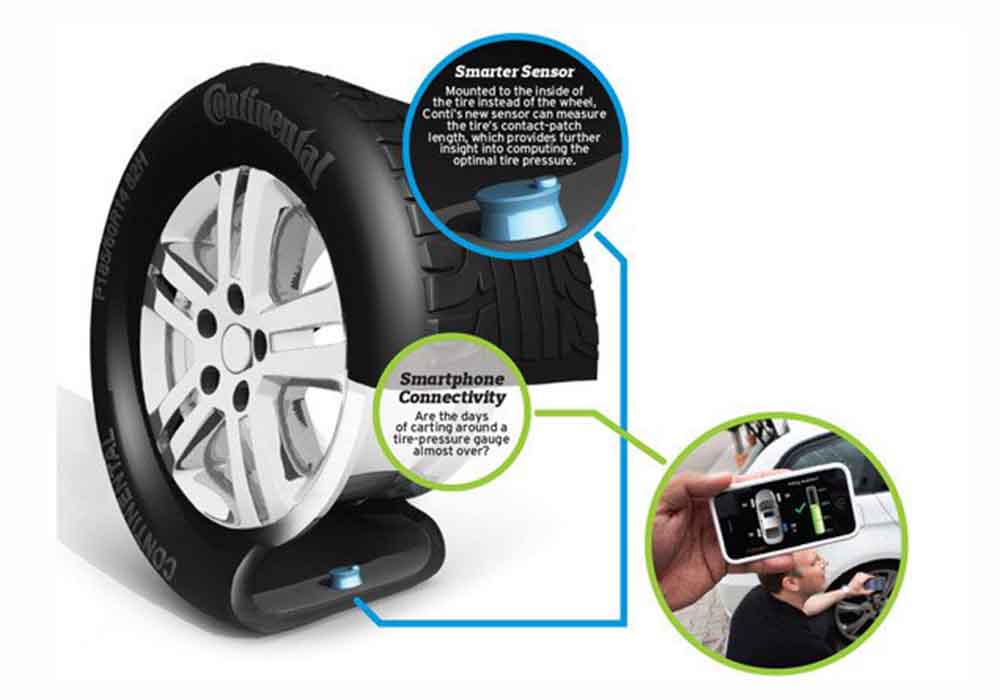
https://www.canadiantire.ca/en/automotive/tires-wheels/tires-wheels-packages.html
https://cansumer.ca/change-winter-tires-cost/
Hartland Tires: 9 Facts You Need To Know (Explained)
When on the search for trailer tires, you may have come across the company Hartland Tires. These are a brand of trailer tires that many users prefer, but they aren't available at every...
Continue Reading
link to How Hot Can RV Tires Get & How to Prevent a BlowoutHow Hot Can RV Tires Get & How to Prevent a Blowout
There can be a tendency to try and drive with RV tires as long as possible. After all, at an average of around $300 each, getting replacements can be quite a costly proposition. However, due to...
Continue Reading
Here is the story of how one of Canada's national brands treats its customers. Not sure if this post is allowed but here goes,
Not sure if this post is allowed but here goes,
December 2017: I took my car into Canadian Tire (Canadian Tire #1 for this story) to switch out my all season tires with my snow tires, something I’ve done numerous times. After dropping my car off I left to go do some shopping. I later returned to pick up my car. I pay as usual, and I am told my all-season tires are in the trunk, as usual. However upon opening my trunk the next morning to get them out, my tires were not there. The personnel at Canadian Tire #1 had not put them in my trunk. I immediately called back, described what happened, told them the size and specifications of my misplaced tires, and after waiting for 20 minutes on the phone, was told that they had found them and I could come and pick them up. I go to the store and after talking with the manager, a younger employee puts some bagged tires in my trunk. Problem solved right? Wrong.
January 2018: After driving for a bit, I notice some vibration in my car. I take it into a shop and have my tire balance checked, all my tires were not balanced, which is what I paid for when the snows got put on. Complain to Canadian tire, tell them everything that has happened so far and how unhappy I am. They reimburse me for the re-balancing.
Complain to Canadian tire, tell them everything that has happened so far and how unhappy I am. They reimburse me for the re-balancing.
May 10, 2018: Today I took my car into a different Canadian Tire (Canadian tire #2), in the city where I go to school, to get the snow tires taken off, and the all-seasons put back on. However I was informed that one of the tires was damaged, I thought that out of the ordinary, but I bit the bullet and decided to buy a new set of tires. I then received a second call, asking why the all-seasons I brought in were a different size than the snow tires, and how the tires I said I would purchase won’t fit. That didn’t make any sense, until I remembered the previous mix up.
The only explanation for this is that they aren’t my tires. After the mix-up last December, I was not given my all-seasons, but instead given a damaged set of tires that are the wrong size for my car. I have now had to purchase a new set of all season tires, not because mine were damaged, but because my tires were lost last fall, due to the incompetence of the workers at Canadian Tire #1.
I am now going to return to Canadian Tire #1 and try to get them to pay for the mistake they made, that is now costing me over $700 (tires, alignment, balancing), which is a lot of money for an unpaid grad student to come up with. I can see them arguing however that there is no way to prove they lost my tires, and I think it will be difficult to get them to pay for my new set. The gentleman I dealt with at Canadian Tire #2 was sympathetic to my plight, and filled out a detailed report of what he saw with the damaged/wrong size tires I brought in today.
Any advice on how to deal with this situation would be well appreciated, I should not have to pay for a new set of tires due to their incompetence.
TLDR; Canadian Tire lost my set of tires, I have to buy new ones and I am out $700. Going to try and make them pay for the new ones, but it may be difficult. Advice on dealing with them welcome.
Consumer disputes over the age of tires have not subsided for several seasons. Buyers are excited that the warranty period for tires is limited to 5-6 years according to GOST, and after the expiration of this period, the rubber becomes unusable.
Buyers are excited that the warranty period for tires is limited to 5-6 years according to GOST, and after the expiration of this period, the rubber becomes unusable.
Is this really the case, read this article.
Manufacturers of most brands on their products set Shelf life is 5 years and service life is also 5 years .
The shelf life of a tire is the period during which it retains its performance when properly stored.
The end of this period does not mean that the tires have become unusable . A shelf life of 5 years is given by manufacturers because, by law, they cannot set a shelf life higher than the service life. Tires over 5 years of storage cannot be called damaged or defective, their technical characteristics may be slightly reduced. American researchers argue that the period of storage of "shoes" must be at least 10 years. Experts from Germany are sure that it cannot exceed 6 years. nine0003
nine0003
The expiration date of tires is the warranty period during which the manufacturer is responsible for the quality and condition of the tire if it was used for its intended purpose without violating the operating rules.
According to Russian legislation (GOST 5513, GOST 4754-97) , the service life of tires is 5 years from the date of manufacture.
How can I find out the date of manufacture of tires? nine0010
You can find out the age of tires by a special DOT code. Tires manufactured after 2000 in the DOT code contain two pairs of numbers, where the first pair indicates the week number of the year, and the second pair indicates the year. Earlier tires before 2000 have 3 numbers in their composition, where the first two digits are the week number, and the last one is the year (see the transcript in the photo).
Determination of the average shelf life of a tire according to GOST and operating conditions. nine0010
nine0010
- The symbol ZR denotes tires for high-speed cars. They are recommended to be used at speeds over 240 km/h. up to 6 years
- Tires with the H symbol are used at a maximum speed of 210 km/h. within 5 years.
- The sign S symbolizes the maximum permissible speed of 180 km/h. and operational period of 4-5 years.
Most tire manufacturers do not agree that tire life is limited to 5 years. Each company has its own opinion on this matter. We analyzed several of them and the information they posted on their official websites. nine0003
Michelin
The French tire manufacturer Michelin has become famous for its active fight against the perception of the rapid aging of tires as a perishable product. Her information campaign "Tires Are Not Bananas" created a lot of noise in the automotive environment. According to the representative office, several test trials were carried out in Saudi Arabia, South Korea and Germany.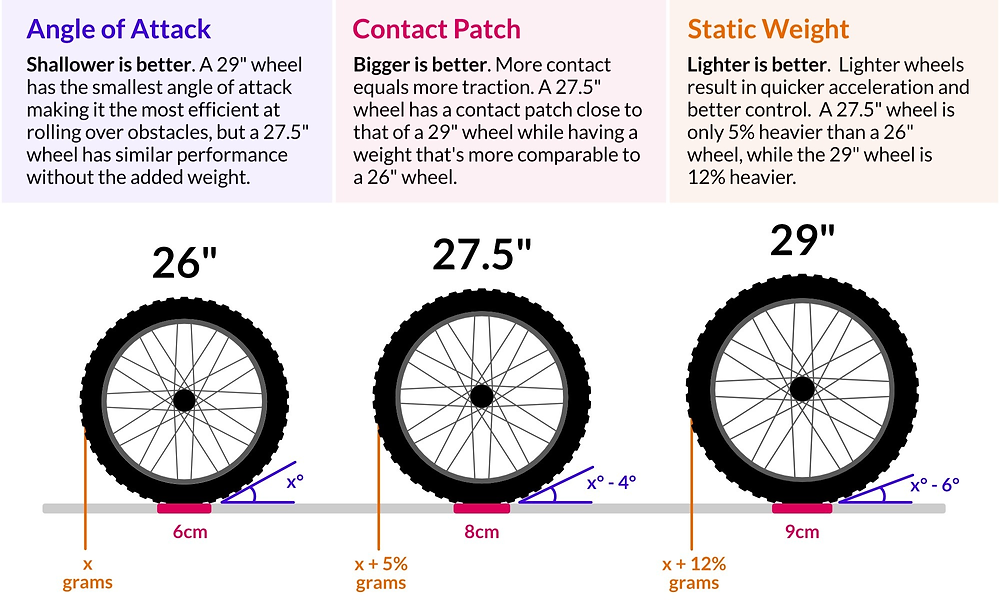 As a result of testing, no difference was found between new tires and tires stored for 3 years. They were tested for various characteristics such as rolling resistance, high speed durability, etc. Tires with a year life were approximately equal in performance to 10-year unused tyres. nine0003
As a result of testing, no difference was found between new tires and tires stored for 3 years. They were tested for various characteristics such as rolling resistance, high speed durability, etc. Tires with a year life were approximately equal in performance to 10-year unused tyres. nine0003
Michelin focuses the attention of car owners on the fact that tires are not a perishable product, their shelf life is not as important as the service life is important, starting from the date the tires are installed on the rims. It is from this moment that the tire is subjected to all tests: pressure, temperature changes, wear, contact with uneven and sharp coatings, etc.
Continental
On the Russian official website of Continental, we found the following information on the expiration dates of tires.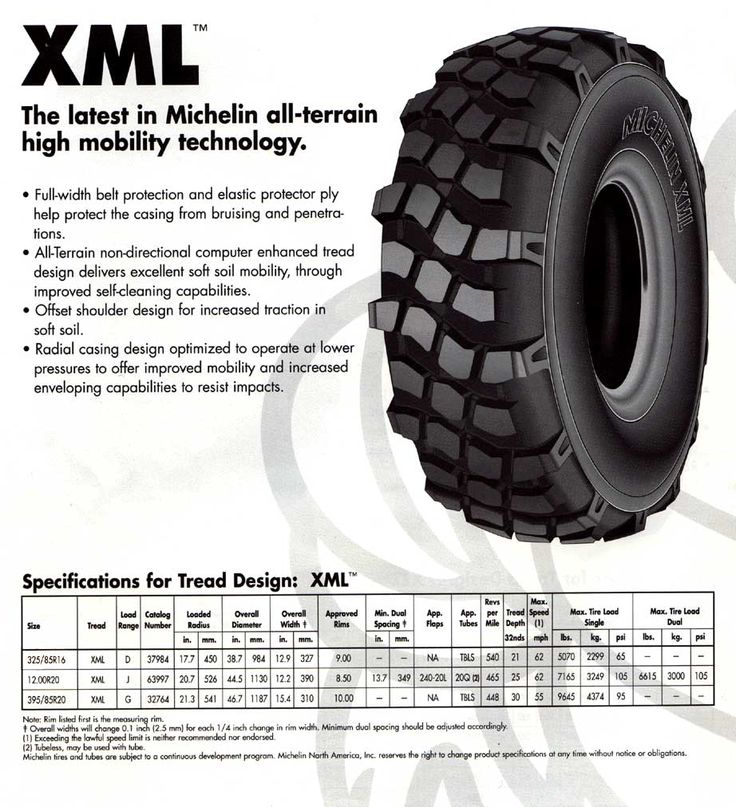 nine0003
nine0003
“When a tire is stored in the correct position and under the recommended conditions, it will not lose its original balanced performance for 5 years from the date of manufacture of the tire.
A properly maintained, unused tire less than 5 years old can be sold as a new tire and used normally.
Continental recommends replacing all tires (including spares) with a sidewall date greater than 10 years. nine0003
Nokian
The following information is posted on the Nokian official website:
“Tire life is not defined by law, but tires can only be considered “new” if they have been manufactured within the last five years. The recommended service life of tires is six years and the recommended maximum period is 10 years.
The opinion of our specialists, based on many years of experience, coincides with the opinion of manufacturers: the shelf life is 5 years + the service life is up to 10 years. Moreover, more "adult" tires, in our opinion, are of better quality.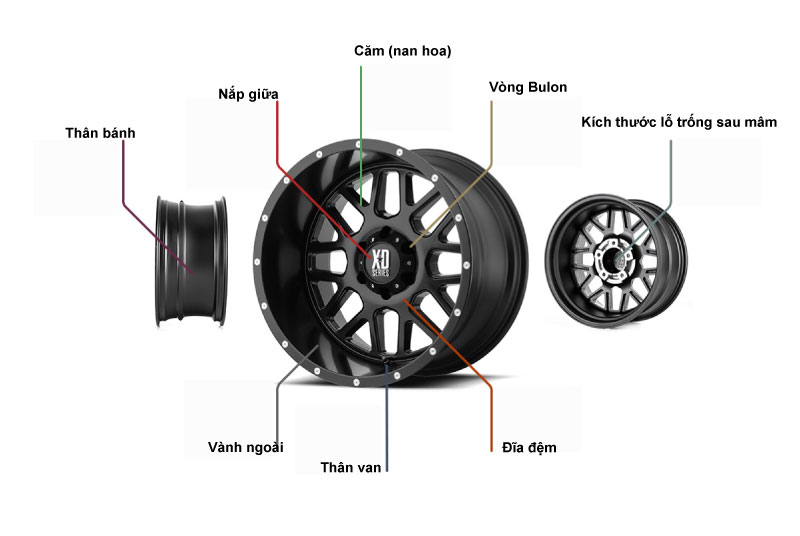 nine0003
nine0003
To keep tires as long as possible, they are stored in compliance with all rules and recommendations. The main condition is a cool, ventilated, darkened room away from oils, paints, ozone, and heat sources.
Rubber products tend to lose their performance over the years. To prevent and slow down this process, manufacturers add polymers to the rubber compound. They prevent oxidative processes that occur due to the interaction of protectors with oxygen and ozone. nine0003
The following are the main conditions for the proper storage of tires in accordance with GOST 24779-81:
Maintaining a constant regime without sudden jumps, slight temperature fluctuations from -30°С to +35°С are allowed;
Provide a low humidity level of 50-80% in a dry, ventilated cool room;
Avoid direct sunlight, use darkened hangars, shield heat sources; nine0003
Keep away from sources of heat;
Tires should not come into contact with corrosive, copper materials.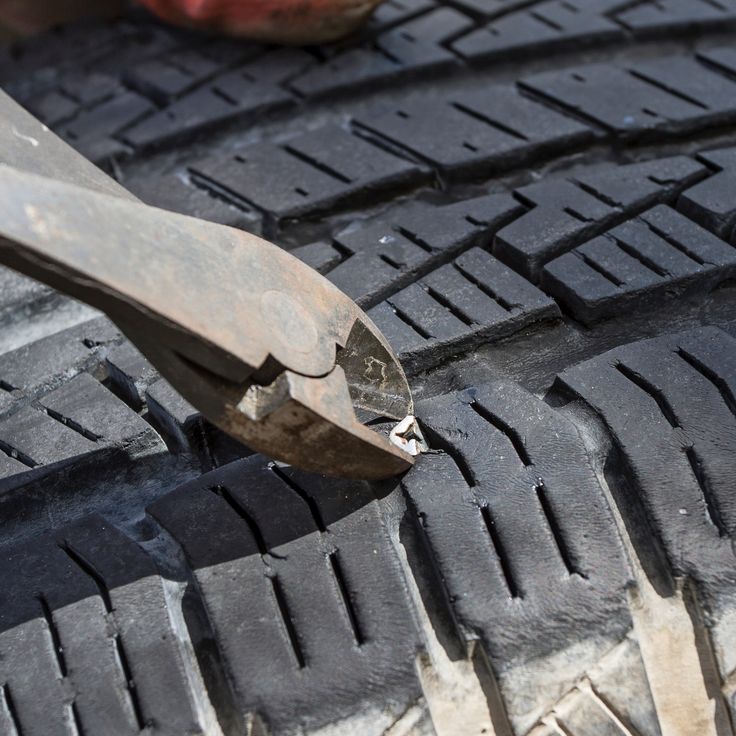
Avoid kinking, loading or positioning on an uneven surface.
Avoid contact with oils, organic solvents, acids, alkalis, fuels and lubricants on the tire surface. It is forbidden to lay tires on a wet and dirty surface. nine0003
In the warm season, when storing tires outside, they should be covered with light-tight material and raised above ground level to ensure ventilation and prevent the occurrence of the greenhouse effect.
Storage on reflective, light and heat absorbing surfaces is prohibited.
Keep away from chemicals, oils, paints, open flames, electric motors that produce ozone. nine0003
Used tires must be washed and dried.
Tires without rims should be stored upright.
The service life depends on many factors: the load on the car, the quality of the roads, the driving style, the distance traveled, tire damage, etc. To increase their service life, follow these rules: nine0003
To increase their service life, follow these rules: nine0003
Check tire pressure every 2-3 weeks. With reduced pressure, tire wear increases by the equivalent of a % reduction. For example, a 15% reduction in pressure can result in a 15% reduction in service life. Inflated tires are less scary.
The wear of the front tires is always significantly higher than the rear ones, so it is recommended to swap them after some time, carefully watching the direction of the tread pattern and the direction of rotation. nine0003
Proper alignment of tires in relation to rims. If the direction is not the same, then performance is significantly reduced.
To prevent damage to the sidewalls of tires, avoid close proximity to curbs and high ledges.
Wash off dirt from the surface of the rubber and from deep grooves with special cleaning agents. nine0003
Adhere to an even driving style without harsh brakes and quick starts.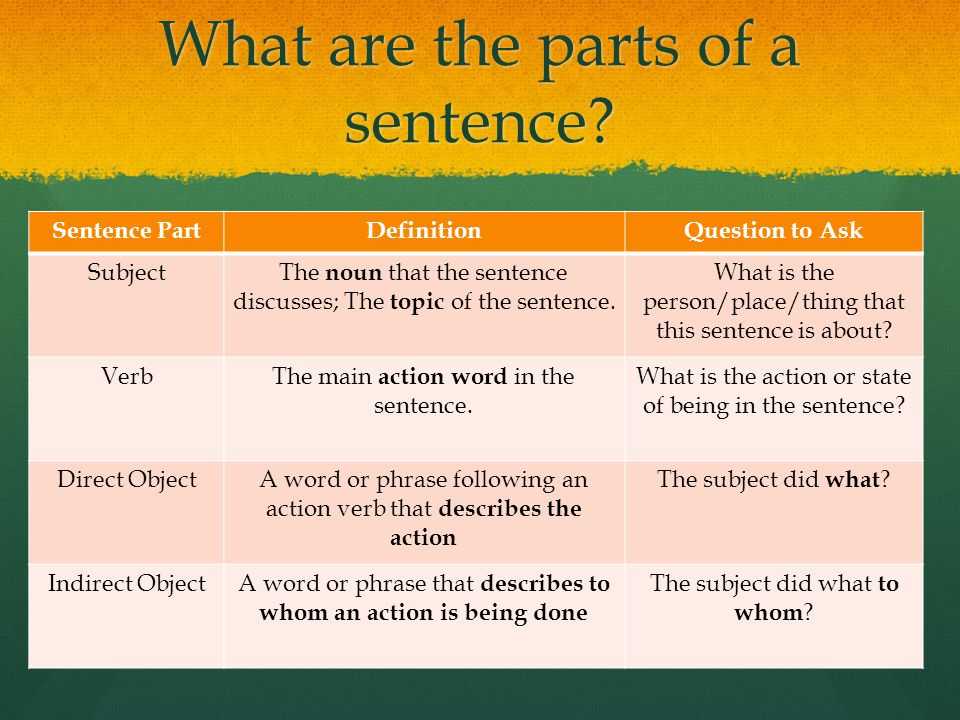
Do not overload the car beyond the norm. 20% excess weight leads to a 30% loss of tire life.
Keep the wheels balanced and check the alignment angles annually.
The main condition for a long tire life is:
- high quality products,
- careful operation,
- proper storage of tires in the off-season,
- timely diagnosis.
The age of tires in standard storage is a minor non-determining factor that should not be taken into account when buying them.
Previous article Next article
The cold season is just around the corner. For most motorists, the choice of winter tires becomes especially relevant. It is used in very difficult conditions, which dictates increased requirements for its characteristics. Yokohama is ready for winter. Its lineup includes many exclusive new products and time-tested options. A comparison of winter tires from a Japanese manufacturer will help you understand which model to choose in each case.
A comparison of winter tires from a Japanese manufacturer will help you understand which model to choose in each case.
Before starting the review, it is worth saying that tires adapted to the harsh climate are supplied to Russia. We are talking about the so-called "Scandinavian" models. They have improved traction on ice and snow. They can be used not only in the middle lane, but also in the northern regions. In addition, domestic consumers are offered many varieties of studded tires. They are suitable for operation in the most extreme conditions. That's where we'll start testing. nine0003
In most of our country, climatic conditions leave much to be desired. Cold winters, frequent ice, heavy snowfalls - all this forces us to use a special approach to the choice of rubber. In such circumstances, it is worth paying attention to studded models. Independent tire tests show that they provide the shortest stopping distance and the best handling on slippery surfaces.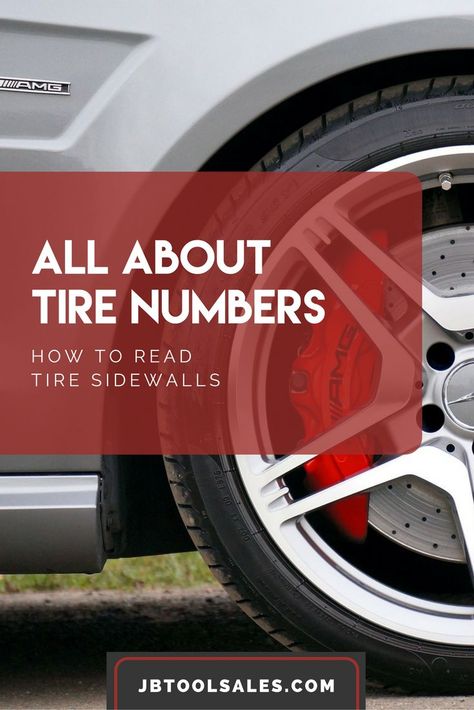 Of course, such tires are not well suited for mild winters. Its natural drawback is poor noise, comfort and grip on clean asphalt. nine0003
Of course, such tires are not well suited for mild winters. Its natural drawback is poor noise, comfort and grip on clean asphalt. nine0003
We will start our review of winter studded tires with the Yokohama IG55 model. This line is well known to drivers in Russia, Europe, Canada, the USA and other countries with difficult climates. Such winter tires can be installed both on cars and on popular crossover models.
Yokohama IG55 tires have been on the market for more than a season. However, they are still willing to participate in the premium winter tire comparison. Their main feature is high-tech spikes, which took a lot of time to develop. Their advantages are: nine0003
Leadership in winter tire comparisons is also ensured by the unique composition of the rubber compound.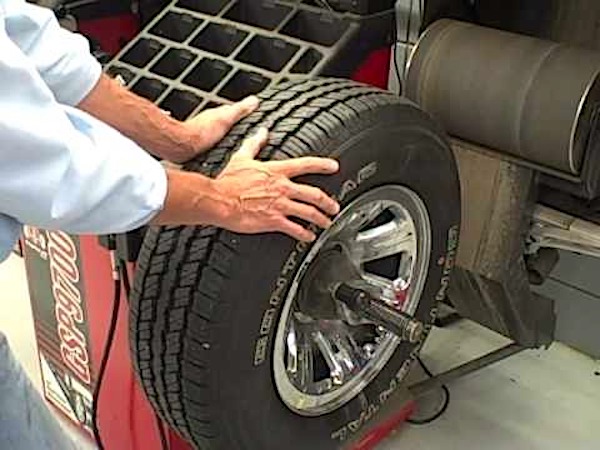 In the production of Yokohama rubber, unusual components are used - including orange oil. Surprisingly, this widely used material significantly improves tire performance. It helps balance things like rolling resistance, traction and durability. In practice, this leads to an increase in the service life of winter models. At the same time, they do not lose elasticity and softness, which provides excellent handling in all conditions. nine0003
In the production of Yokohama rubber, unusual components are used - including orange oil. Surprisingly, this widely used material significantly improves tire performance. It helps balance things like rolling resistance, traction and durability. In practice, this leads to an increase in the service life of winter models. At the same time, they do not lose elasticity and softness, which provides excellent handling in all conditions. nine0003
Another feature of Yokohama IG55 rubber is improved moisture management. The tire absorbs large amounts of water, instantly drying the thin film on the road surface. Then the liquid enters the semi-radial grooves, which force it out. Tests show that this significantly reduces the chance of hydroplaning in both straight and high-speed maneuvering.
Finally, it is worth mentioning the unusual shape of the shoulder blocks of winter studded tires. Their asymmetric pattern literally "bites" into the snow and mud, helping to maintain stable traction on the rough road. nine0003
nine0003
Yokohama offers 97 sizes of IG55 tires. Its catalog contains both compact models for small cars and tires for heavy crossovers. Many variants of such rubber are produced with a reinforced carcass that can withstand very heavy loads. Fans of a quiet ride and sports driving, jeepers and owners of executive sedans may think about buying such winter tires.
New for 2017 is Yokohama IG65 winter tires. It became a further development of the model described above. During its design, computer modeling technology was used. It significantly accelerated the execution of numerous tests. With its help, engineers were able to understand how rubber behaves in different conditions - from dry asphalt to extreme snowy off-road. nine0003
The winter tire comparison shows that the experimental technology really outperforms the classic tests. The spikes of this rubber are located in 20 rows, which made it possible to evenly distribute them over the surface of the tire.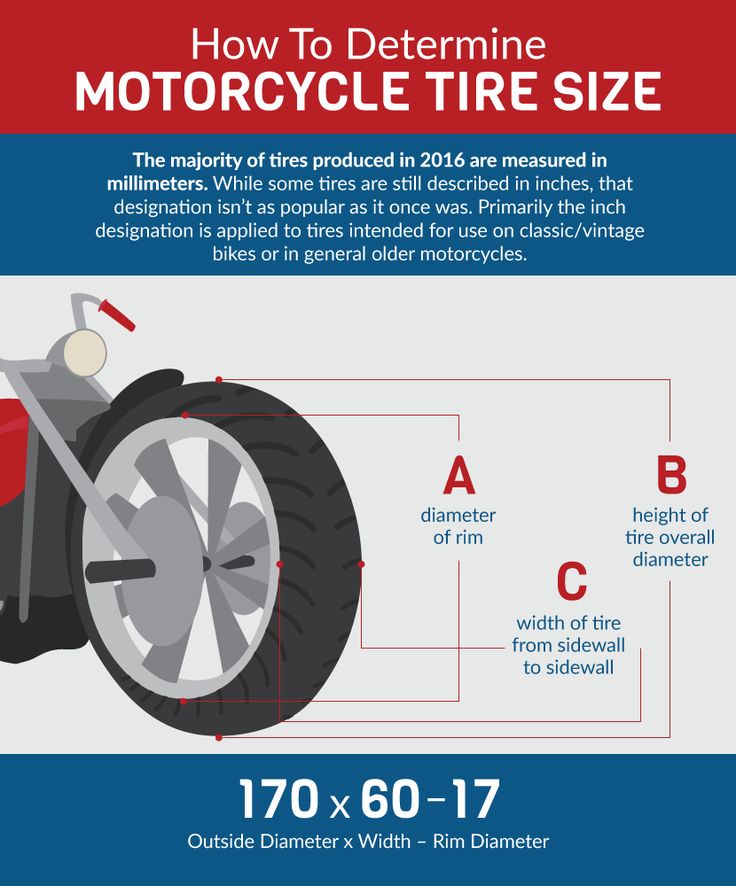 The result is a significant improvement in traction while reducing noise.
The result is a significant improvement in traction while reducing noise.
The computer program also helped to optimize the shape of the spikes. The double hex tips help you keep the right direction even when moving on ice. The widened flange improves traction on semi-soft surfaces such as wet snow. The multi-faceted base prevents the studs from falling out of the rubber and evens out loads, slowing down wear. nine0003
Among the common features of this winter tire and its predecessor is the active resistance to hydroplaning. But its directional pattern has also been improved. It has three types of grooves:
A studded tire test shows that moisture has no chance. Crashing into a deep puddle, the rubber cuts it and creates a strip of clean asphalt. Thanks to this, the driver maintains control over the car even in very bad weather. nine0003
Yokohama IG65 tires are available in 29 sizes. They cover the most popular diameters - from 16 to 18 inches. Most of them have a reinforced frame. Such winter tires will certainly be of interest to owners of cars of various classes, including crossovers.
They cover the most popular diameters - from 16 to 18 inches. Most of them have a reinforced frame. Such winter tires will certainly be of interest to owners of cars of various classes, including crossovers.
A difficult winter with heavy snowfalls and complete icing does not cover the entire territory of Russia. In the southern regions, the temperature often ranges from -10 to +5 degrees. In such conditions, the use of winter studded tires is unacceptable. They will not only destroy the road surface, but also significantly complicate driving. This applies not only to southern latitudes, but also to large cities. In recent years, utilities have effectively dealt with sudden weather changes. Roads remain clean and traffic safe. Thanks to this, the need for spikes is gradually reduced to a minimum. As a result, drivers' costs are reduced and the life of the pavement is extended. nine0003
Especially for such conditions, Yokohama has prepared non-studded tires. We will start their review with the V-series models, which have become very popular in many European countries.
We will start their review with the V-series models, which have become very popular in many European countries.
Tires called V902 are made from a mixture of synthetic and organic polymers. Thanks to an optimized composition, the rubber retains its softness and elasticity over a wide temperature range. It is suitable for driving in sudden thaws and severe frosts. nine0003
The tire comparison also shows that tires in this series can withstand long-term intensive use. They are not afraid of pits or abrasive surfaces. The secret to this lies in the use of "microsilica". Its molecules are evenly distributed in the compound, increasing its strength. This innovative rubber slowly heats up during high-speed driving. There are no hotbeds of tension and areas with high temperatures. The result is uniform wear, excellent traction at high mileage. nine0003
Another feature of the winter model rubber is three-dimensional sipes with complex-shaped walls. Their advantages are:
Their advantages are:
A tire review shows that the Yokohama V902 uses the optimal solution for moderate winters - a directional asymmetric tread pattern. In its central part there are longitudinal and diagonal grooves that effectively drain excess water and counteract hydroplaning. The inner part of the tire consists of relatively soft blocks, and the outer part of the hard elements. This solution helps to effectively discard snow and dirt, clearing the road. Tests also show that the reinforced lugs improve the machine's directional stability in adverse conditions. nine0003
Such tires may be of interest to owners of minivans, crossovers, sedans and many other cars. It is available in almost 50 variants with a diameter of 14 to 21 inches. The manufacturer offers models of two modifications - with index A they are equipped with three longitudinal grooves, and B - with four.
The winter tire test also includes tires worthy of real sports cars. Buyers can choose V905 tires with indexes V and W. This means that they guarantee driving safety at speeds up to 240 and 270 km / h, respectively. Such indicators allow you to visit racing tracks not only in the summer heat, but also on cold winter days. nine0003
The most important features of this rubber are a special tread pattern and an optimized composition. They allow you to increase the contact patch area compared to other models. Independent tests show that its length increases while its width shrinks somewhat. This solution helps to achieve the following results:
When reviewing winter tyres, it is impossible not to mention the unique structure of the V905. Each of its blocks is cut by many lamellas - large and microscopic, two-dimensional and three-dimensional. Externally, the surface of such a tire resembles a complex abstract pattern. Such "art" has a purely practical purpose. Thanks to him, the rubber actively resists slipping in corners. In addition, it helps the car to maintain stability both in winter snowdrifts and in off-season slush. nine0003
Externally, the surface of such a tire resembles a complex abstract pattern. Such "art" has a purely practical purpose. Thanks to him, the rubber actively resists slipping in corners. In addition, it helps the car to maintain stability both in winter snowdrifts and in off-season slush. nine0003
All this makes these tires one of the best winter studless tires for family cars and sports cars. They allow you to maintain directional and lateral stability of the machine at high speeds and make active maneuvering truly safe. Tests also show that they have many other benefits.
Orange oil is also used in the production of these tires. It makes the rubber durable while maintaining excellent traction. This decision will be appreciated by drivers who actively use the car during the cold season, overcoming more than one tens of thousands of kilometers. nine0003
In addition, soft elastic rubber minimizes rolling resistance. This effect is enhanced by the use of an innovative under-tread layer. It allows you to achieve a balanced stiffness, reducing heat generation. All this leads to a significant reduction in fuel consumption. The test shows that the car becomes more economical not only in laboratory conditions, but also in real operation.
It allows you to achieve a balanced stiffness, reducing heat generation. All this leads to a significant reduction in fuel consumption. The test shows that the car becomes more economical not only in laboratory conditions, but also in real operation.
This feature of Yokohama V905 will also please sports car owners. For them, it will mean extra miles without refueling on the race track. As a result, they will be able to outperform competitors both in sports and in everyday life.
Changeable winters? Long trips? These factors can make the driving conditions of a car really unpredictable. Today he rides on a city road lightly powdered with snow, and tomorrow he finds himself on an icy highway. Many drivers have experienced this situation. That is why you have included non-studded models of the Yokohama IG50 series in the comparison of winter tires. Such tires can be installed on ordinary cars and large crossovers. It provides excellent handling on asphalt, snow, ice and mud. nine0003
nine0003
These tires are recommended for drivers living in various climatic zones. They will be equally useful both in the south of our vast country and in the northern regions. This versatility is achieved by optimizing the design and chemical composition.
The IG50 tires made it to the list of the best winter tires due to the unique structure of the surface layer. Modern manufacturing technology makes it possible to make rubber porous by covering it with many microscopic depressions. They literally "suck" water from under the tire, instantly draining the road. This effect is enhanced by the adsorbent gel, which is part of the rubber compound. It quickly absorbs moisture and releases it as soon as possible. A winter tire test shows that this solution significantly improves hydroplaning resistance. nine0003
But this is not the only advantage of the porous tire structure. The bubbles burst during the production process form a wavy profile. They also mimic microcracks that form during operation. Thanks to this, the tire grips the ice well after the first kilometers. It helps the vehicle maintain lateral stability and prevents slipping in tight corners.
They also mimic microcracks that form during operation. Thanks to this, the tire grips the ice well after the first kilometers. It helps the vehicle maintain lateral stability and prevents slipping in tight corners.
But the test of winter tires Yokohama IG50 shows that it copes well with snowy roads. The reason for this is in the special structure of the outer part of the tread. It contains many slots that form small lugs. This pattern allows you to throw away clods of mud and wet snow, creating ideal conditions for high-speed driving and active maneuvering. nine0003
Tires do not give in to wet asphalt, often found in the off-season or during sudden thaws. In their central part there are 3 deep grooves with a three-dimensional profile. They effectively remove excess water and snow. The special pattern also compensates for uneven loads. It increases the contact patch area, helping to maintain control in difficult conditions. Around the central groove of these winter tires are the so-called belt blocks. They grip closely to each other, improving handling on different surfaces. Tests also make it clear that these elements significantly reduce braking distances on wet or snowy roads. nine0003
They grip closely to each other, improving handling on different surfaces. Tests also make it clear that these elements significantly reduce braking distances on wet or snowy roads. nine0003
Most IG50 tire blocks are cut into pieces with thin diagonal sipes. They improve traction and accelerate the removal of water. A comparison of various non-studded winter tires shows that this technical solution significantly reduces break-in times. Rubber acquires its properties after the first kilometers of run, without requiring lengthy preparation.
The high-end Yokohama IG50 rubber tested is available in more than 100 sizes. The catalog of the Japanese manufacturer includes both ultra-efficient 12-inch models and 20-inch tires for premium cars. The speed index of all tires is Q, which guarantees a safe and comfortable ride at a speed of 160 km/h. nine0003
Comparison of winter tires of various models prompted engineers to think about the need for further improvement of the design. Therefore, Yokohama IG50 Plus tires received a pronounced asymmetric tread pattern. Unlike most winter models, they consist of two parts with different purposes.
Therefore, Yokohama IG50 Plus tires received a pronounced asymmetric tread pattern. Unlike most winter models, they consist of two parts with different purposes.
The outer side of the tread contains a large number of very hard blocks. They effectively cope with loose snow and mud, helping to keep the car stable even in very bad weather. They feature deep 3D sipes that strike the perfect balance between noise, traction and durability. Thanks to this, the winter thaw submits to the car, making the trip truly comfortable and safe. nine0003
The interior of the IG50 Plus winter tires is made up of large padded elements cut through with many thin sipes. They significantly increase the area of the contact patch on smooth polished ice. Thanks to this, the car acquires directional and lateral stability. This advantage is enhanced by the porous structure borrowed from the base model. The tire test confirms that the car becomes really stable even without studs and snow chains. nine0003
nine0003
The advantages of the described model should also be called fuel efficiency and durability. A comparison of winter tires shows that it is significantly ahead of its competitors in these indicators. The reason for this is the reinforced frame. While maintaining a constant level of rigidity, it does not allow excessive deflection. Thanks to this, the wheel transmits maximum torque, reducing the load on the engine and other critical components of the car. Energy losses are reduced and the occurrence of foci of excessive stress is prevented. As a result, a winter tire can withstand very high mileage without significant structural changes. nine0003
Yokohama IG50 Plus tires are available in a variety of sizes ranging from 14" to 19". There is their enlarged modification A, which is distinguished by the presence of an additional longitudinal groove. The unification with the IG50 model allows the installation of these tires on the wheels of one axle without any negative consequences.
SUV and crossover owners will also be interested in our winter tire test. In it, we will consider models designed for installation on large vehicles. They help to realize the potential of powerful engines and all-wheel drive transmissions capable of transmitting very high torque. Thanks to the special design of these tires, winter slush becomes nothing more than a small obstacle for the car, which does not affect comfort and safety in any way. nine0003
The "off-road" series is represented by Geolandar tires, which are abbreviated as the "G" index. They are delivered to various countries of the world - from Japan, Germany and the USA to Russia, Canada and Norway.
The G075 model is very similar to the IG50 series tires described above. Comparison of winter tires of these modifications allows you to make sure that they are made of the same porous rubber. Microscopic grooves improve water absorption and form a wavy profile that improves ice traction. Tests of studless tires show that it helps the car to maintain a stable position both during thaws and in the most severe frosts. nine0003
Tests of studless tires show that it helps the car to maintain a stable position both during thaws and in the most severe frosts. nine0003
The main difference between these tires is the zigzag shape of wide and narrow longitudinal grooves. By enhancing the edge effect, it improves adhesion to various coatings. In addition, this solution significantly speeds up the ejection of snow and mud.
The rubber blocks are covered with many microscopic grooves and sipes. They give the winter model the following advantages:
The wide central rib consists of rigid blocks. It increases the area of the contact patch and helps the car maintain directional stability during high-speed driving. This is confirmed by numerous independent tests.
The manufacturer offers more than 50 sizes - winter roads with them submit to both compact crossovers and large SUVs. Tire diameter varies from 15-20 inches. nine0003
Tire diameter varies from 15-20 inches. nine0003
Having met the wishes of consumers, the Japanese manufacturer conducted a lot of tests of winter tires that retain excellent properties at positive temperatures. The result of his research was the Yokohama GEOLANDAR I/T-S tires. Their main feature is a unique moisture-absorbing composition. During tests, such rubber effectively absorbed excess water and pushed liquid out of the contact patch. Thanks to this, the car remained stable even on roads with deep puddles. nine0003
Tire blocks are cut with triple 3D sipes with a complex profile. They not only improve traction on ice, but also prevent the elements from moving during active driving. This evens out tire wear, reduces noise levels and shortens braking distances.
Off-road tests also show that it performs well on all surfaces, from dry pavement to polished ice. This is largely the merit of microscopic diagonal grooves. They give the tread relief and allow you to get a wavy profile. Thanks to this, the tire "clings" even to the smallest bumps, protecting the car from slipping. nine0003
Thanks to this, the tire "clings" even to the smallest bumps, protecting the car from slipping. nine0003
When looking at the tire, an aggressive directional tread pattern with a wide central part catches the eye. It significantly improved the test results on dry pavement. With it, the car maintains directional stability during high-speed maneuvering, which will surely appeal to fans of a sporty driving style.
Yokohama GEOLANDAR I/T-S is available in more than 60 sizes. Among them there are 15-inch modifications suitable for compact crossovers, and 22-inch modifications designed for large SUVs. Many of these tires have a reinforced carcass that can withstand increased loads. nine0003
In the rubber test, we examined a variety of tires from the Japanese company Yokohama. The manufacturer offers various models for SUVs and cars, for sports cars and compact hatchbacks. Each of them has its own advantages and strengths.
A test of Yokohama studded tires shows that they are perfectly adapted to the harsh Russian winters. Multifaceted tips allow them to "bite" into thick ice. Wide flanges provide good traction on slippery surfaces. The complex shape of the supports prevents the loss of details even on dry pavement. Computer-aided design technology optimizes the placement of the spikes. It not only increases the stability of the car, but also significantly reduces the noise level. nine0003
Multifaceted tips allow them to "bite" into thick ice. Wide flanges provide good traction on slippery surfaces. The complex shape of the supports prevents the loss of details even on dry pavement. Computer-aided design technology optimizes the placement of the spikes. It not only increases the stability of the car, but also significantly reduces the noise level. nine0003
V-series models allow you to use an active driving style even in the cold season. Their main advantage is an optimized chemical composition, which helps to maintain the elasticity of the material at any temperature. Some models use a combination of orange oil and microsilica. These materials optimize the technical characteristics of the rubber. With them, tires become durable and reduce fuel consumption.
The non-studded models of the IceGuard line also participated in the test. Their asymmetrical tread pattern provides excellent stability on all surfaces. Its inner part is represented by large soft blocks.